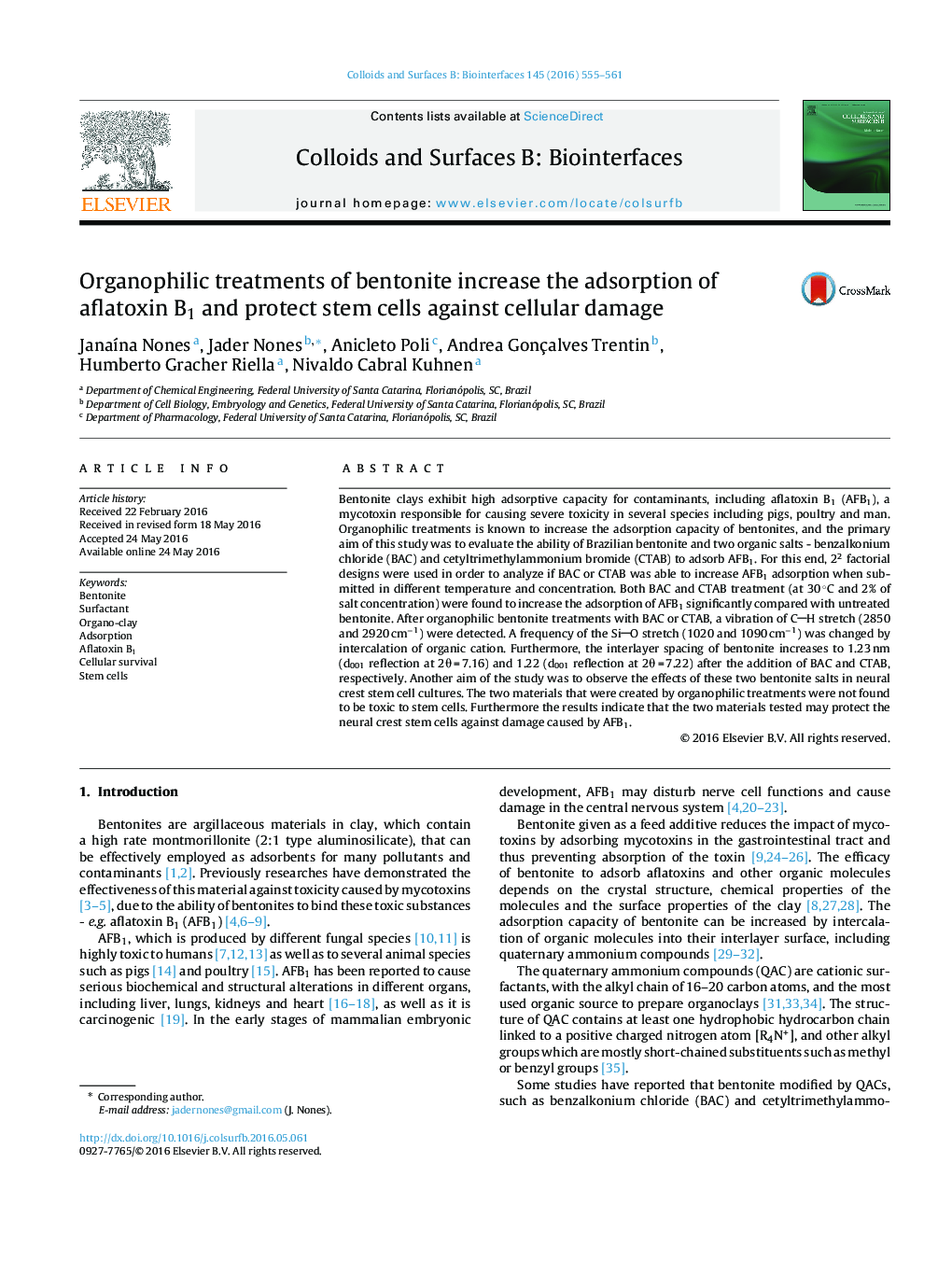| Article ID | Journal | Published Year | Pages | File Type |
|---|---|---|---|---|
| 598980 | Colloids and Surfaces B: Biointerfaces | 2016 | 7 Pages |
•Organophilic treatments of bentonite increased AFB1 adsorption.•Concentration and temperature affect the organophilic treatments of bentonite.•The organic bentonites did not cause toxicity in neural crest stem cells.•The new materials protected the stem cells against damage caused by AFB1.•BAC and CTAB offer new strategies against aflatoxicoses in animals and humans.
Bentonite clays exhibit high adsorptive capacity for contaminants, including aflatoxin B1 (AFB1), a mycotoxin responsible for causing severe toxicity in several species including pigs, poultry and man. Organophilic treatments is known to increase the adsorption capacity of bentonites, and the primary aim of this study was to evaluate the ability of Brazilian bentonite and two organic salts - benzalkonium chloride (BAC) and cetyltrimethylammonium bromide (CTAB) to adsorb AFB1. For this end, 22 factorial designs were used in order to analyze if BAC or CTAB was able to increase AFB1 adsorption when submitted in different temperature and concentration. Both BAC and CTAB treatment (at 30 °C and 2% of salt concentration) were found to increase the adsorption of AFB1 significantly compared with untreated bentonite. After organophilic bentonite treatments with BAC or CTAB, a vibration of CH stretch (2850 and 2920 cm−1) were detected. A frequency of the SiO stretch (1020 and 1090 cm−1) was changed by intercalation of organic cation. Furthermore, the interlayer spacing of bentonite increases to 1.23 nm (d001 reflection at 2θ = 7.16) and 1.22 (d001 reflection at 2θ = 7.22) after the addition of BAC and CTAB, respectively. Another aim of the study was to observe the effects of these two bentonite salts in neural crest stem cell cultures. The two materials that were created by organophilic treatments were not found to be toxic to stem cells. Furthermore the results indicate that the two materials tested may protect the neural crest stem cells against damage caused by AFB1.
Graphical abstractFigure optionsDownload full-size imageDownload as PowerPoint slide
